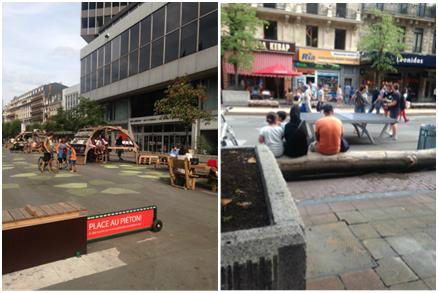
We are in a crisis now – and omicron has made it harder to imagine the pandemic ending. But it will not last forever. When the COVID outbreak is over, what do we want the world to look like?
In the early stages of the pandemic – from March to July 2020 – a rapid return to normal was on everyone’s lips, reflecting the hope that the virus might be quickly brought under control. Since then, alternative slogans such as “build back better” have also become prominent, promising a brighter, more equitable, more sustainable future based on significant or even radical change.
Returning to how things were, or moving on to something new – these are very different desires. But which is it that people want? In our recent research, we aimed to find out.
Along with Keri Facer of the University of Bristol, we conducted two studies, one in the summer of 2020 and another a year later. In these, we presented participants – a representative sample of 400 people from the UK and 600 from the US – with four possible futures, sketched in the table below. We designed these based on possible outcomes of the pandemic published in early 2020 in The Atlantic and The Conversation.
We were concerned with two aspects of the future: whether it would involve a “return to normal” or a progressive move to “build back better”, and whether it would concentrate power in the hands of government or return power to individuals.
Four possible futures
| Back to normal – strong government “Collective safety”
|
Back to normal – individual autonomy “For freedom”
|
| Progressive – strong government “Fairer future”
|
Progressive – individual autonomy “Grassroots leadership”
|
In both studies and in both countries, we found that people strongly preferred a progressive future over a return to normal. They also tended to prefer individual autonomy over strong government. On balance, across both experiments and both countries, the “grassroots leadership” proposal appeared to be most popular.
People’s political leanings affected preferences – those on the political right preferred a return to normal more than those on the left – yet intriguingly, strong opposition to a progressive future was quite limited, even among people on the right. This is encouraging because it suggests that opposition to “building back better” may be limited.
Our findings are consistent with other recent research, which suggests that even conservative voters want the environment to be at the heart of post-COVID economic reconstruction in the UK.
The misperceptions of the majority
This is what people wanted to happen – but how did they think things actually would end up? In both countries, participants felt that a return to normal was more likely than moving towards a progressive future. They also felt it was more likely that government would retain its power than return it to the people.
In other words, people thought they were unlikely to get the future they wanted. People want a progressive future but fear that they’ll get a return to normal with power vested in the government.
We also asked people to tell us what they thought others wanted. It turned out our participants thought that others wanted a return to normal much more than they actually did. This was observed in both the US and UK in both 2020 and 2021, though to varying extents.
This striking divergence between what people actually want, what they expect to get and what they think others want is what’s known as “pluralistic ignorance”.
This describes any situation where people who are in the majority think they are in the minority. Pluralistic ignorance can have problematic consequences because in the long run people often shift their attitudes towards what they perceive to be the prevailing norm. If people misperceive the norm, they may change their attitudes towards a minority opinion, rather than the minority adapting to the majority. This can be a problem if that minority opinion is a negative one – such as being opposed to vaccination, for example.
In our case, a consequence of pluralistic ignorance may be that a return to normal will become more acceptable in future, not because most people ever desired this outcome, but because they felt it was inevitable and that most others wanted it.

dekazigzag/Shutterstock
Ultimately, this would mean that the actual preferences of the majority never find the political expression that, in a democracy, they deserve.
To counter pluralistic ignorance, we should therefore try to ensure that people know the public’s opinion. This is not merely a necessary countermeasure to pluralistic ignorance and its adverse consequences – people’s motivation also generally increases when they feel their preferences and goals are shared by others. Therefore, simply informing people that there’s a social consensus for a progressive future could be what unleashes the motivation needed to achieve it.![]()
——————————-
This blog is written by Caboteer Professor Stephan Lewandowsky, Chair of Cognitive Psychology, University of Bristol and Ullrich Ecker, Professor of Cognitive Psychology and Australian Research Council Future Fellow, The University of Western Australia
This article is republished from The Conversation under a Creative Commons license. Read the original article.








